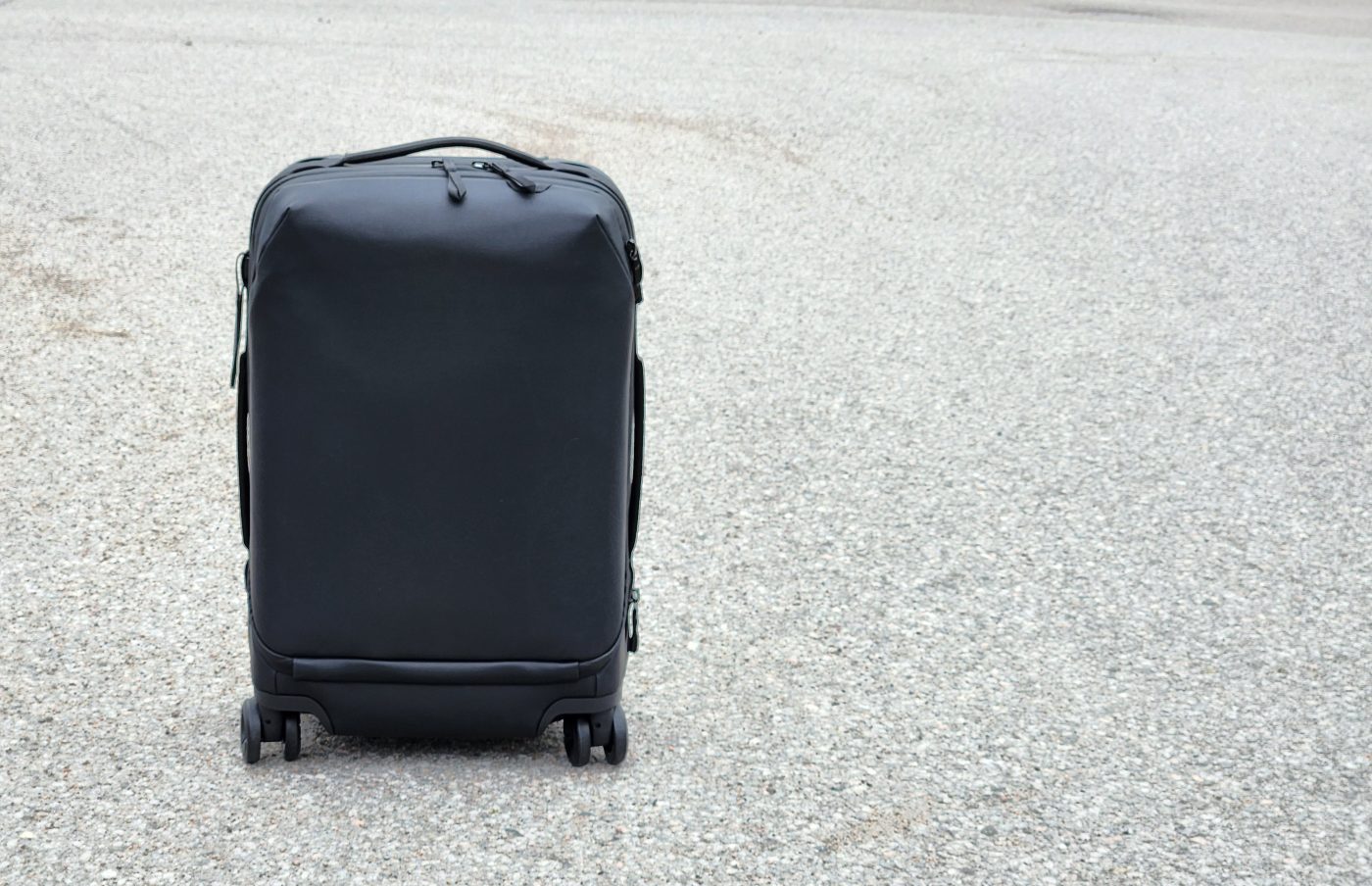In this article, I am taking a look at the newly revealed Roller Pro Travel Suitcase by Peak design. This is the first article in a series; I will be reporting on my long-term experience after traveling overseas, using various means of transportation over the summer.
Please note: Peak Design provided equipment for review, but did not sponsor this post. Our reviews are always independent and honest, with no input from manufacturers. Links to products are affiliate links and will help support additional un-biased reviews.
The Peak Design lineup has been robust for some time (so much so that recent new releases are more cosmetic than functional). It caters to many use cases, both for photographers and travelers. After the release of the Outdoor line, there has been one remaining hole in that lineup: a rolling bag or suitcase. With the launch of the Roller Pro, the company finally addresses this.
Peak Design generally uses KickStarter to fund their new projects, and the Roller Pro is no different. Launched during the Spring of 2025, it created quite a splash (like most Peak Design launches, to be fair). The Roller Pro is a carry-on sized rolling suitcase with a few tricks of its sleeve and designed with photographers in mind. Launching alongside it is a new XL Camera Cube designed specifically for the Roller Pro, but also usable with other Peak Design bags.
In this review, I will look at that makes the Roller Pro different from the plethora of suitcases already on the market. Like all Peak design products, the Roller Pro is backed by a lifetime warranty but commands a higher-than-average price. What sets it apart? Read on to find out.
Exterior Features
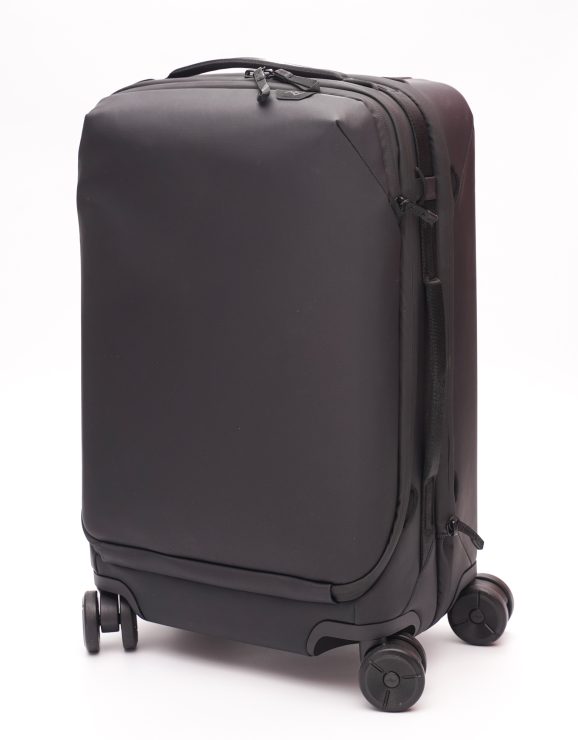
The Roller Pro is a typical carry-on suitcase. With exterior dimensions of 55.4 x 35.6 x 22.9 cm (21.8 x 14 x 9 inches), it should fit most carry-on restrictions (always check with your airline). It can expand by 5 cm (2 inches) in thickness thanks to a fairly typical wrap-around zip. This increases the interior volume from 34 liters to 39 liters.
The Roller Pro comes in three color options: Black, Sage (green) and Eclipse (dark red). I am testing the Black version.
The weight is surprisingly high, at 4 kg (8.8 pounds). That’s on the higher end of the spectrum for a carry-on suitcase, and that’s before considering the weight of the optional XL camera cube (more on that later).
There are typically two types of suitcases: soft and hard shells. Soft shells are often heavier, offer more pockets and make it easier to fit items into every nook. They typically open via a top lid. Hard shells are normally more robust, offer a single compartment with no external pockets and open in the center like a clamshell.
The Roller Pro is a mix of both, with the benefits of each. It’s built around a custom-molded polycarbonate hard shell, covered with EVA foam and nylon canvas similar to the company’s backpacks. This has the benefits of offering excellent protection while allowing the presence of an extra pocket (which does not compete with interior space) and improving internal access.
Like many Peak Design products, the Roller Pro displays understated elegance. Its lines are refined and there are no conspicuous accents.
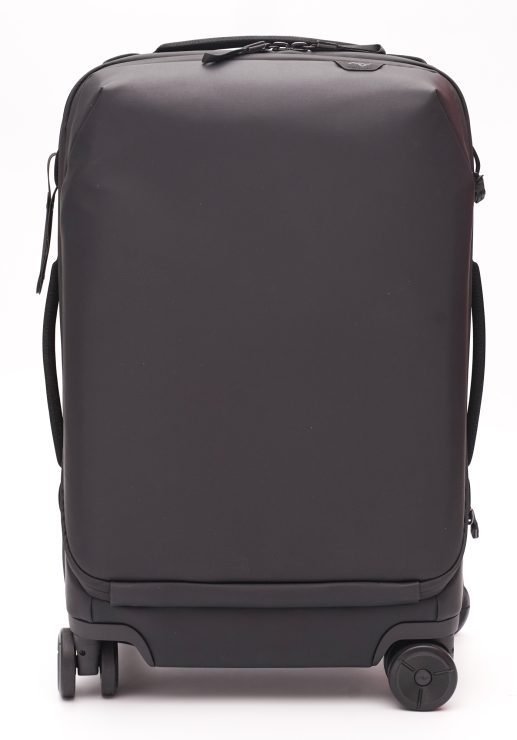
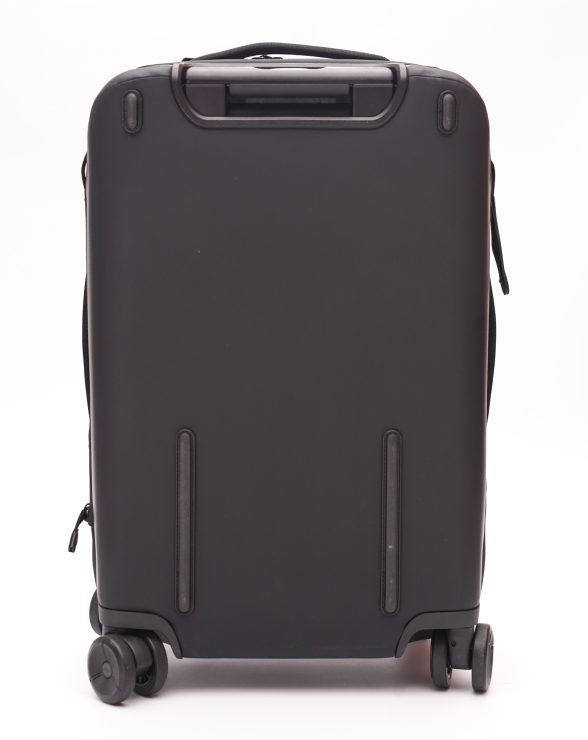
The front is smooth and featureless. The back shows bumpers for when the suitcase is laid down.
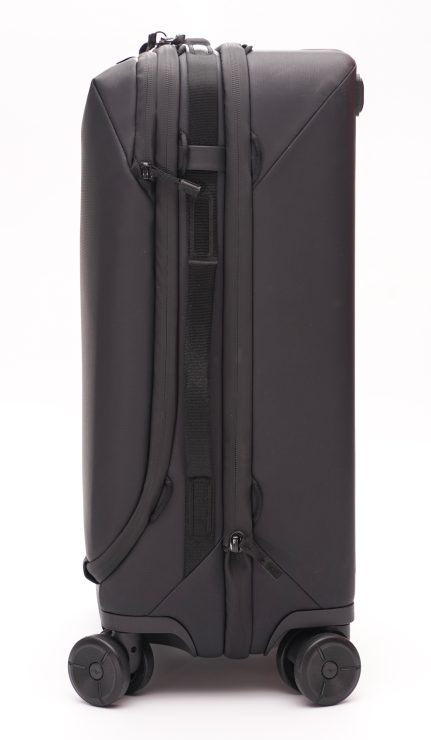
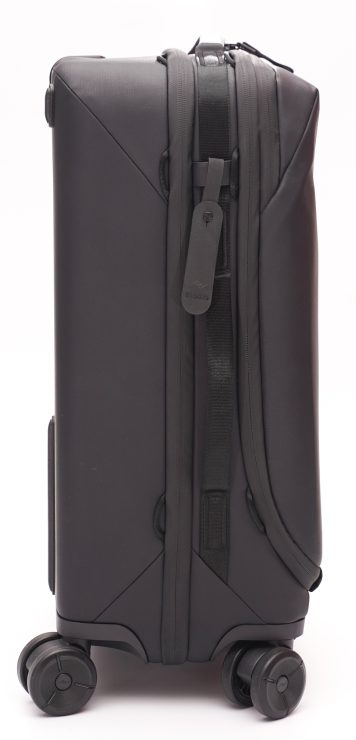
There are four grab handles on the suitcase: one at the top, one at the bottom, and one on each side. That’s more than on any other suitcase I’ve seen in my life: they typically have one or at the most two. The handles are well located and the suitcase balances well.
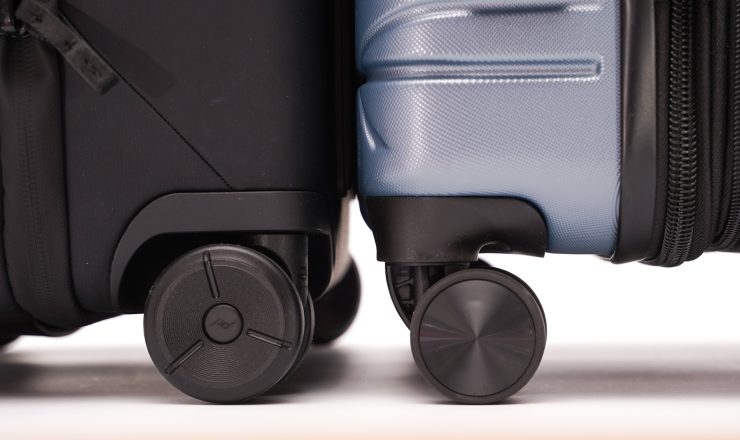
The wheels on most suitcases are almost identical: small, fragile, easy to damage. That’s why Peak Design refrained from selecting their wheels from a catalog, but rather custom-designed them. They are larger than usual and thus operate better on uneven surfaces. The wheels are also easy to remove and replace as needed, but replacements will have to be sourced from Peak Design directly (likely under warranty).
The smoothness of these wheels is unmatched in all my previous experience with luggage. They are also placed as widely apart as possible, improving balance, and offer a better than average ground clearance when the suitcase rolls on two wheels. They truly are impressive.
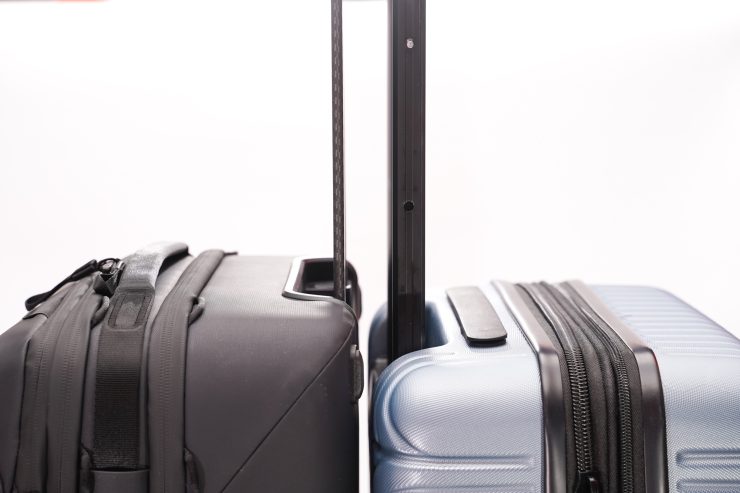
Just about every rolling suitcase comes with an extending handle. These are also almost identical regardless of the brand: square-ish flimsy tubes telescoping in three sections. These tubes take up a lot of space inside the suitcase and are the weakest element, usually the first to break. To improve this, Peak Design went all the way.
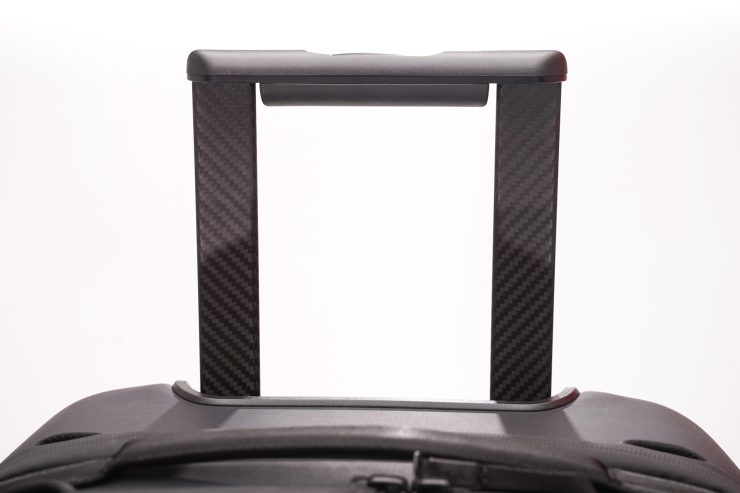
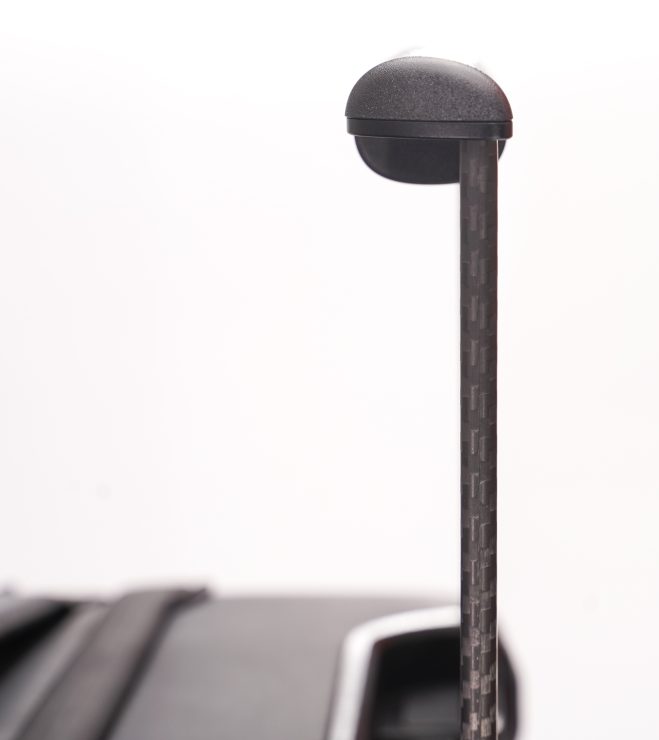

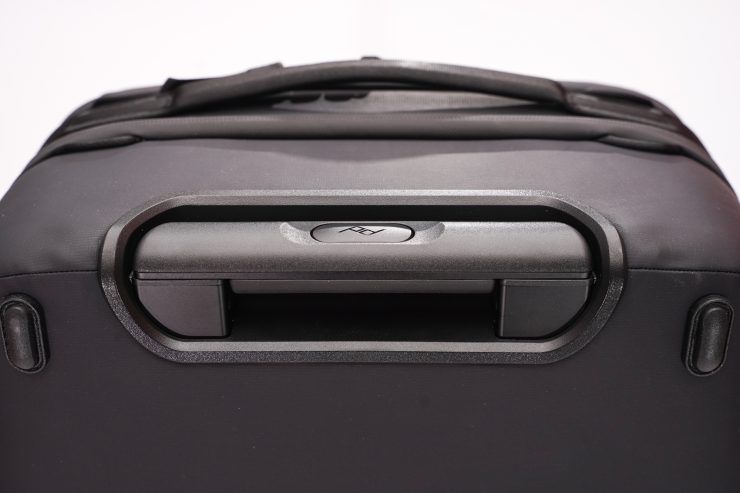
The Roller Pro’s solution is carbon fiber flat tubes made of a single section. This is possibly the most spectacular aspect of the suitcase. The tubes are thin, taking up less space inside the suitcase. They are sturdy and do not wobble, being made of a single piece (wobbling and torsion is the bane of regular handles). Carbon fiber is strong, light, and does not flex easily. The handle is wide, with excellent tactile feel for its release button. The tubes can lock at two heights.
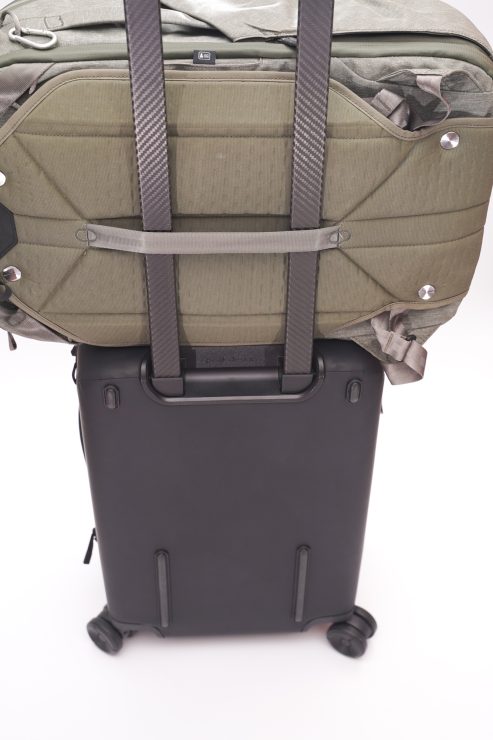
This handle is a pleasure to use and a highlight of the suitcase. In particular, when sliding an extra bag on it, the handle feels much more solid and durable than when using a traditional telescopic handle.
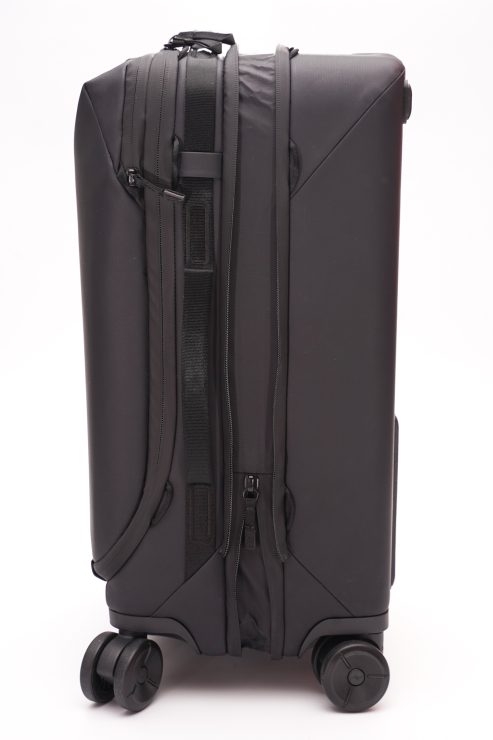
As is typical, there are two main zippers: one to open the main compartment and another to expand the volume. Both are protected against water, as is the fabric itself.
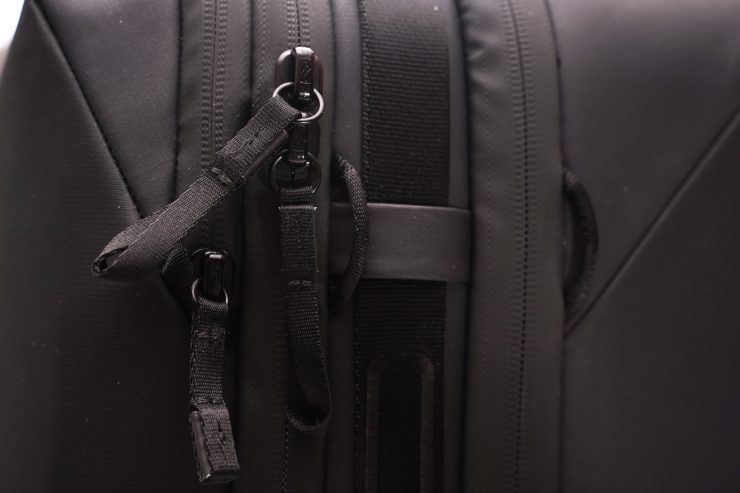
There is no built-in lock, but multiple ways to thread and attach zipper pulls together using a TSA-approved lock.
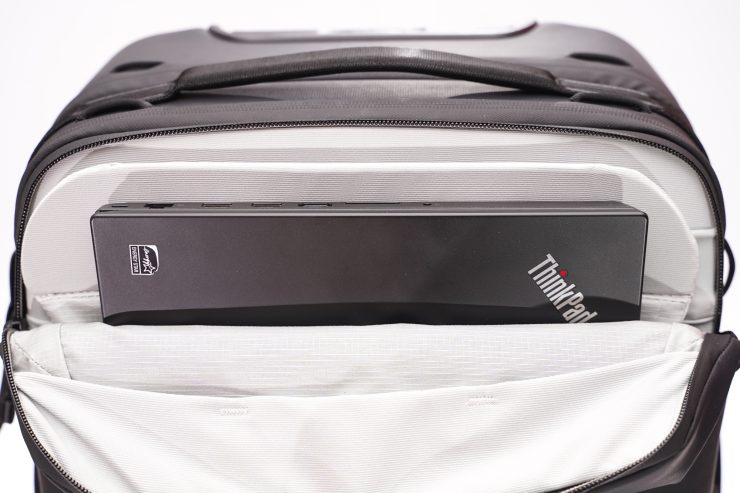
The third zipper, located near the front at the top, opens the front storage. This padded pocket is designed to hold a laptop (up to 16 inches).
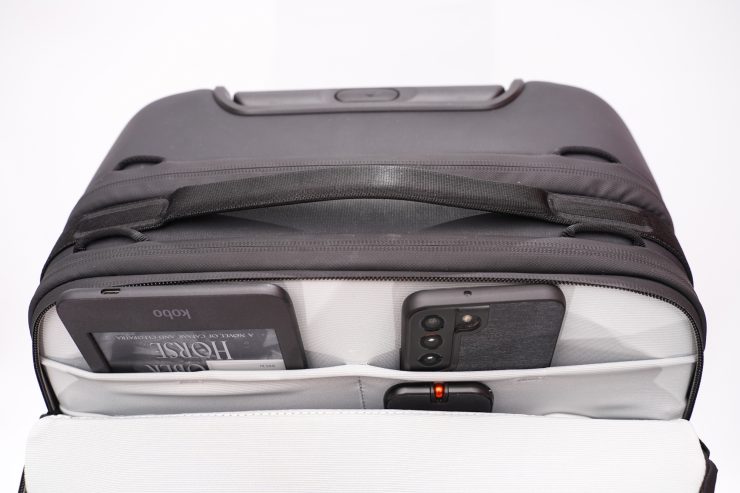
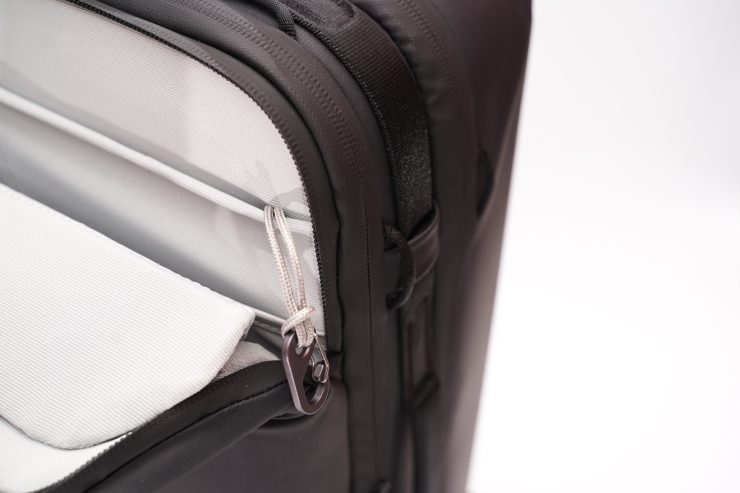
It also has two stretch pockets to store cables, small chargers or earbuds (even a phone), and a lanyard with a metal clip for keys. A larger area can hold a phone or e-reader. It’s entirely possible to never open the main compartment and function entirely with the front pocket before arriving at destination.
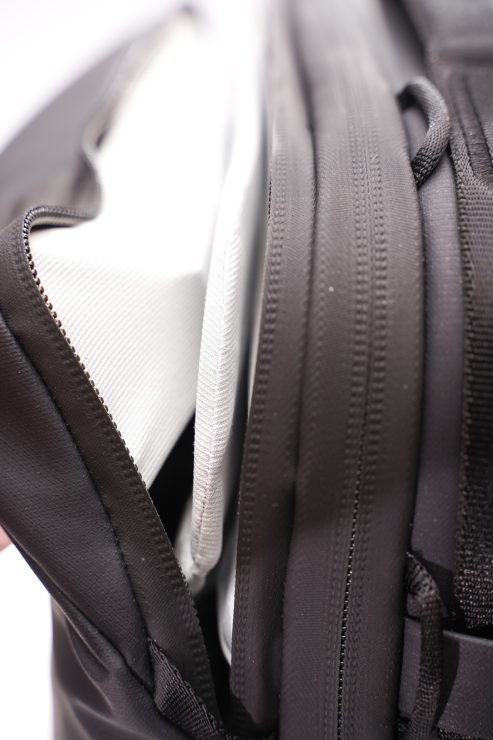
The flap of the front pocket has an inverted fabric shroud at the top. Its use is not obvious, but is a very clever touch. The laptop sleeve closes via a magnet in addition to the zipper. If the zipper is left open and the suitcase flipped upside down, the magnet could fail. If that happens, the shroud will catch the laptop before it falls to the ground. A detail, but a brilliant one.
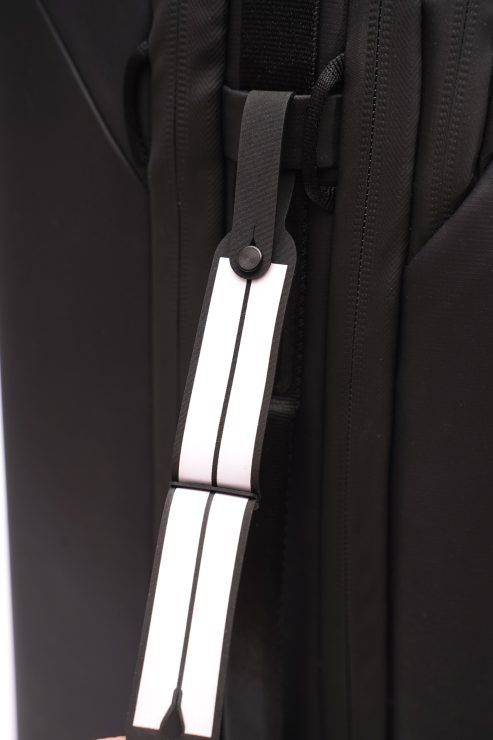
There is a basic Hypalon tag to write your information on.
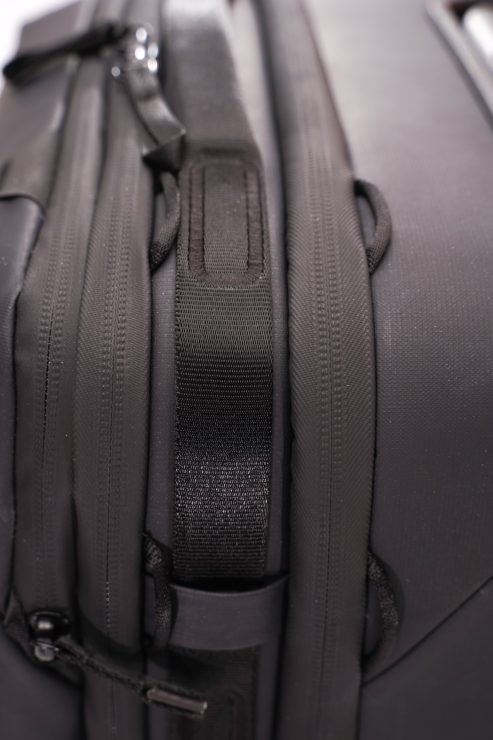
As is common on all Peak Design bags, there are cord hooks placed all around the suitcase, close to the top and side handles. You can use any optional strap to attach objects, like a tripod to, the suitcase.
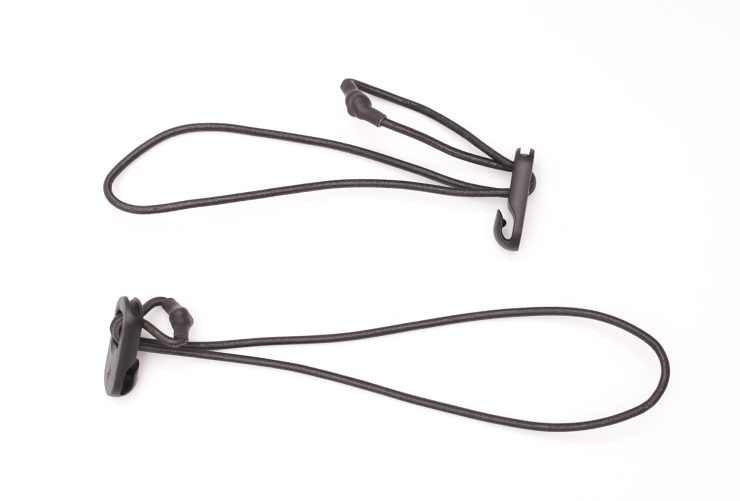
Two traps similar to those on the Outdoor bags are included. This won’t be a viable option when traveling by plane but will be great for photographers going on location.
Interior Features
Accessing the main compartment differs from more traditional suitcases. Soft shells typically have a shapeless top flap opening to the side, and hard shells normally split in two in the middle. Both essentially double their ground footprint when opened.
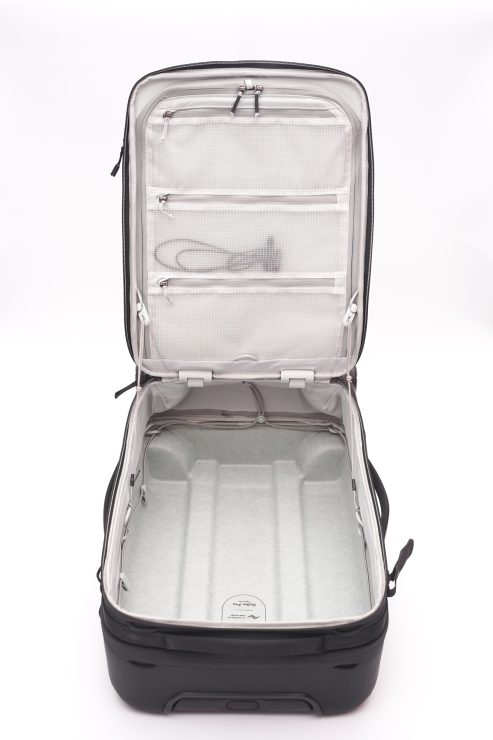
The Roller Pro does things differently. The rigid top opens front-to-back and is held near-vertically by cords. Peak Design calls this a “drawbridge” design, and it’s fantastic. It has several benefits. The first is that it keeps the ground footprint smaller. It also gives easier access to the pockets on the top cover. It turns the interior into one single and deep compartment instead of two smaller ones needing separators to hold items in place.
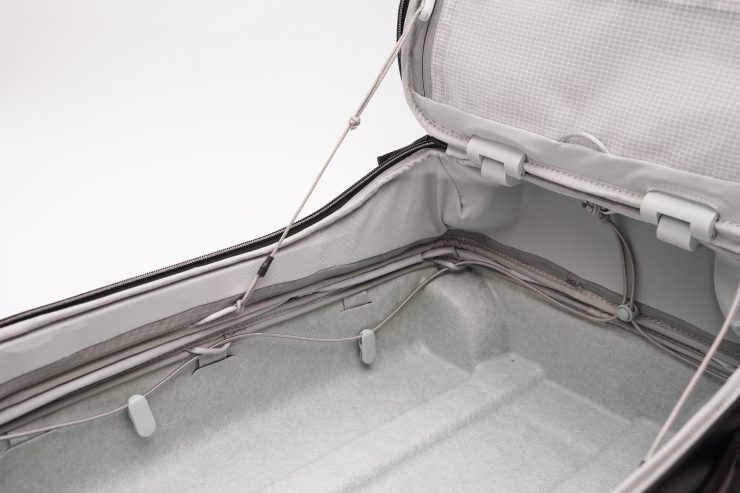
The length of the cords can be adjusted, or they can be removed entirely. In that case, the drawbridge still works but will tend to bend nearly flat if any weight is placed in it.
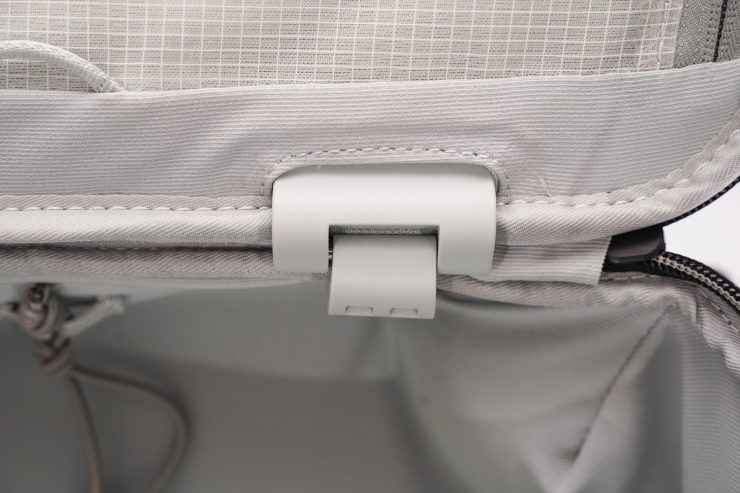
The hinges are strong and sturdy.
I mentioned pockets on the drawbridge. There are three, each taking up the whole width. They are shallow, but made of stretch fabric so they can expand.
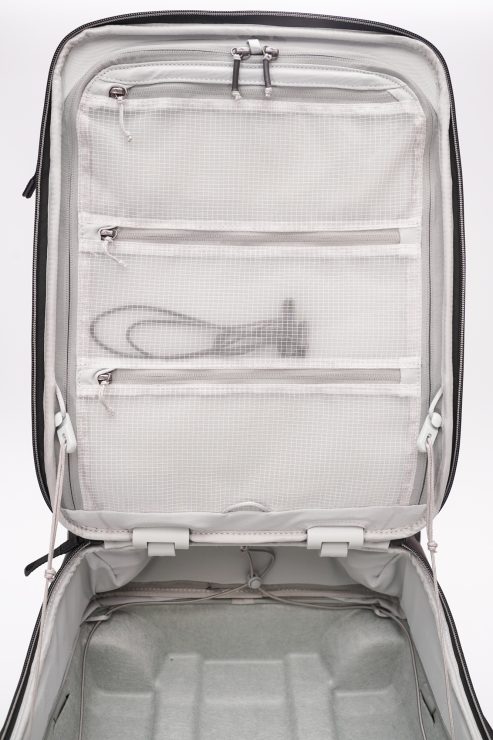
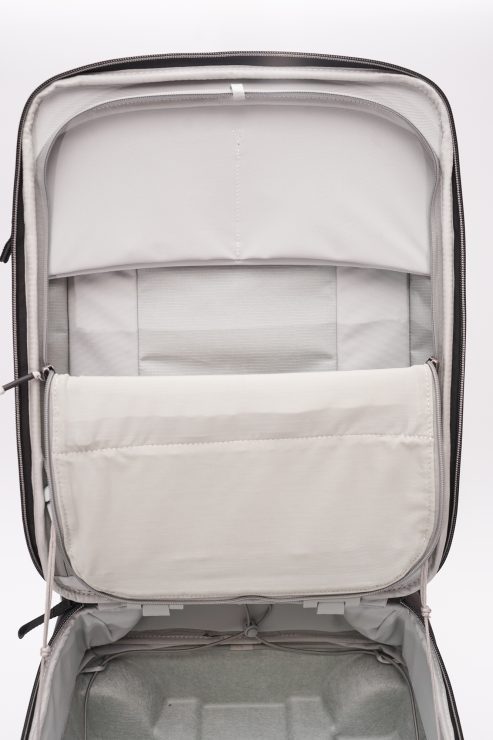
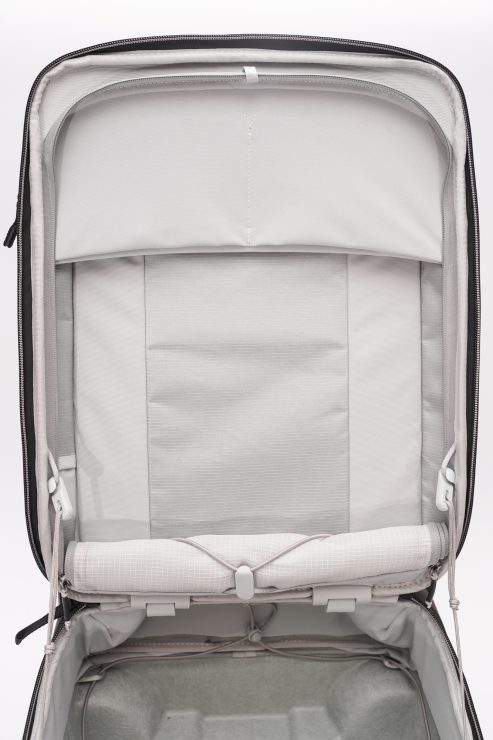
These pockets are mounted on a divider which can be unzipped and rolled, held in place by a cord. Doing so enlarges the main compartment slightly. The divider can also be used to separate some elements, like dress shirts, from the rest.
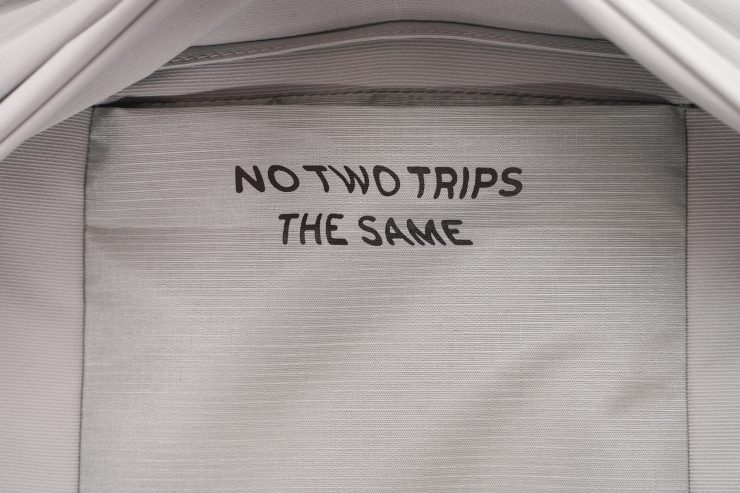
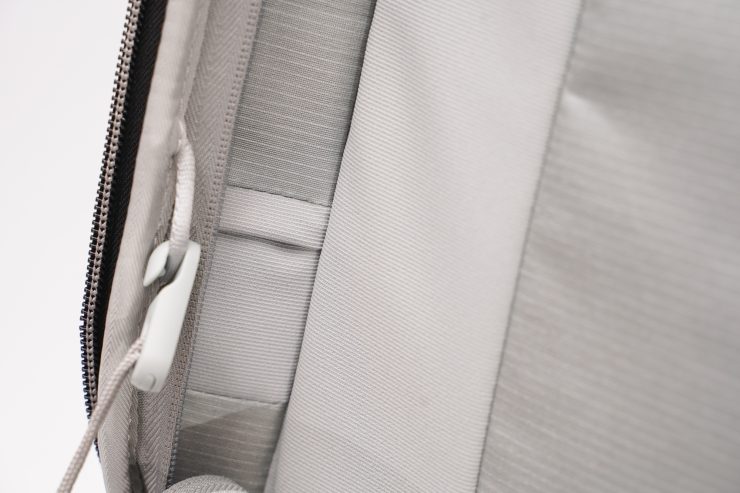
There is also a hidden pocket for passports and spare cash, as well as a smart tag pocket.
The deep interior again shows how much Peak Design pays attention to details. Almost every suitcase on the market has an interior made of gray, loose lining. The Roller Pro’s interior is made of felt glued to the molded frame. It leaves no wasted space and is much more pleasing to the eye.
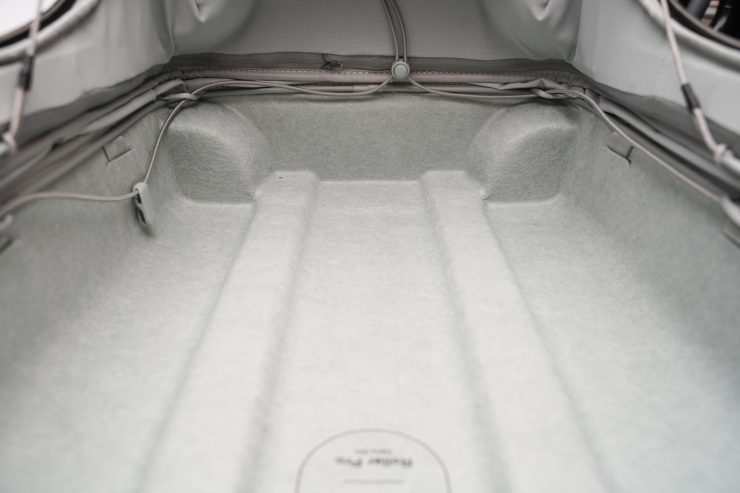
The bottom isn’t perfectly flat, but nearly so thanks to the thin telescopic handle. It makes a true difference, especially when using packing cubes which are otherwise pushed upwards.
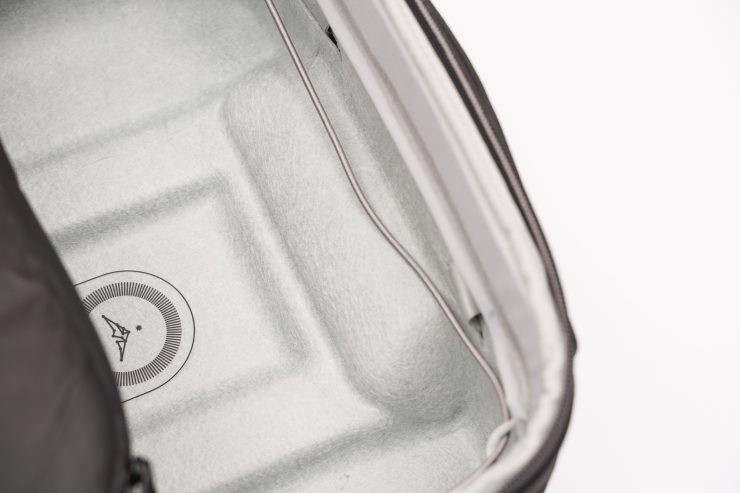
There’s a bump where the handle goes, but given that the suitcase is slightly taller than others, and that it uses some of the space between the wheels also, the internal volume is still net-positive.
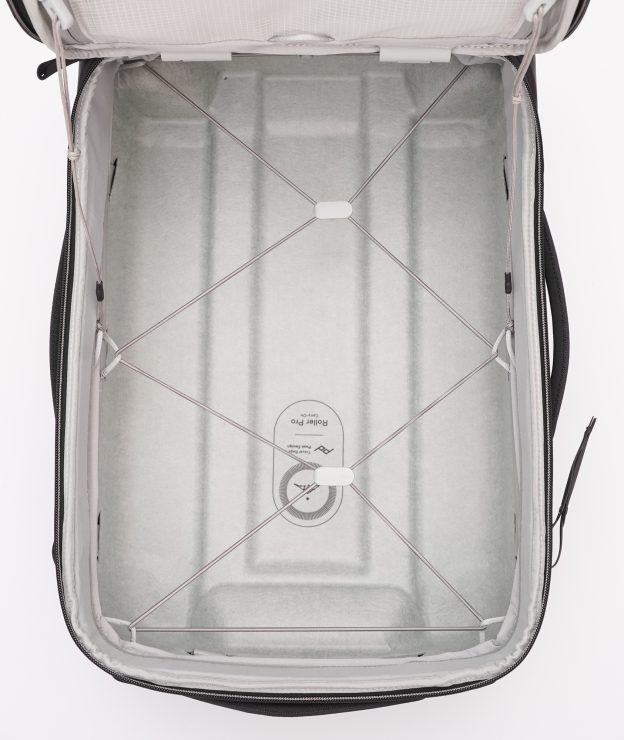
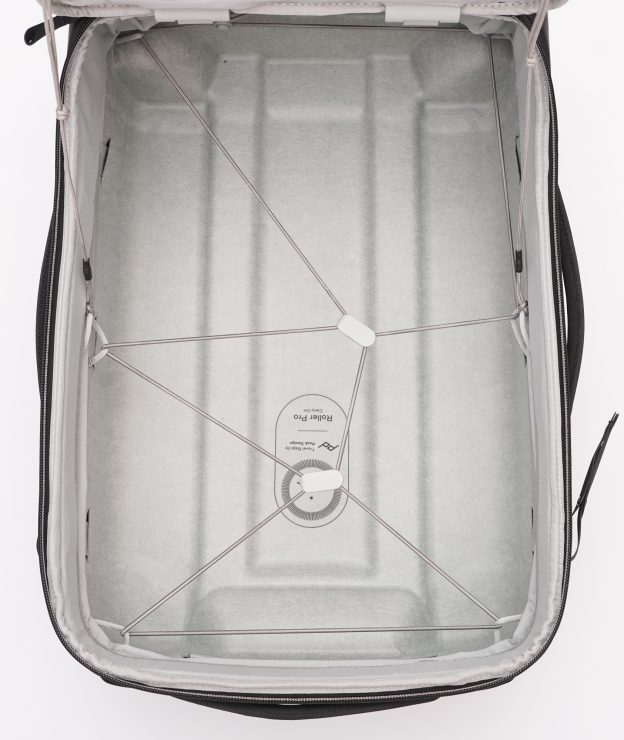
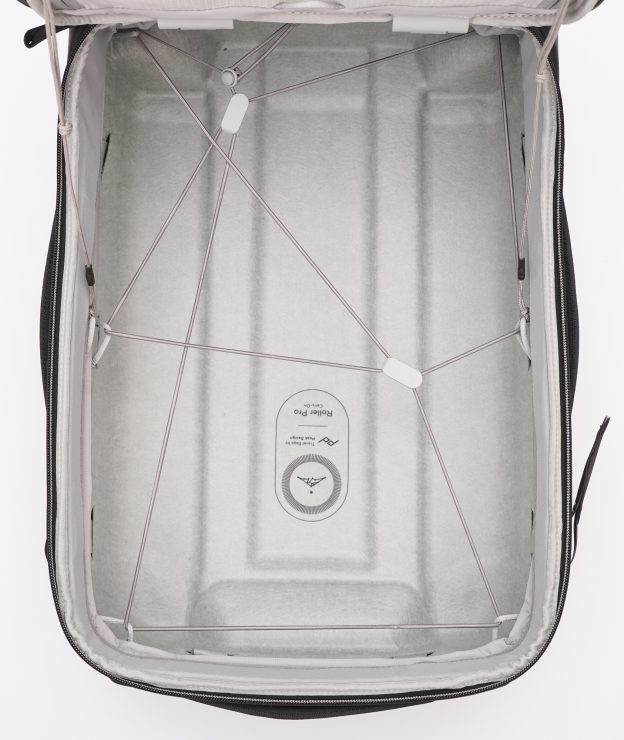
Instead of flat, basic straps to hold items in place, the company used the same kind of elastic cords that they use elsewhere in their products. These cords can be attached in a number of ways and retract automatically when not in use. They cover the whole circumference of the suitcase. Simple things, but improvements nonetheless.
XL Camera Cube
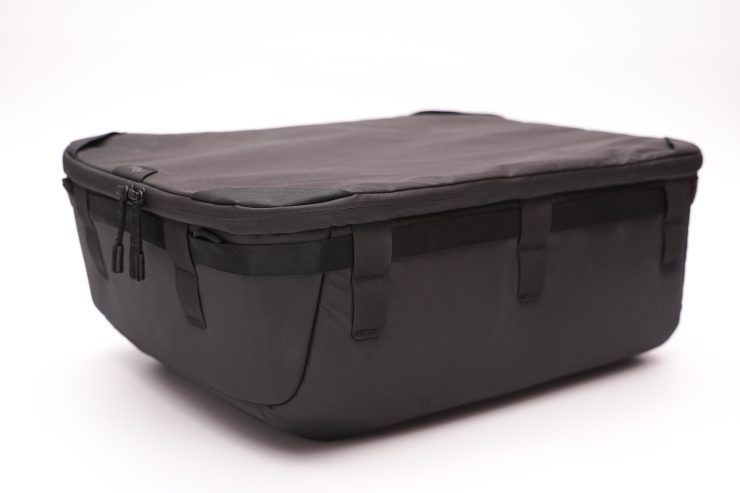
Alongside the Roller Pro, Peak Design released their largest camera cube to date. Using the same design language as their smaller options, the XL cube fits perfectly inside the Roller Pro.
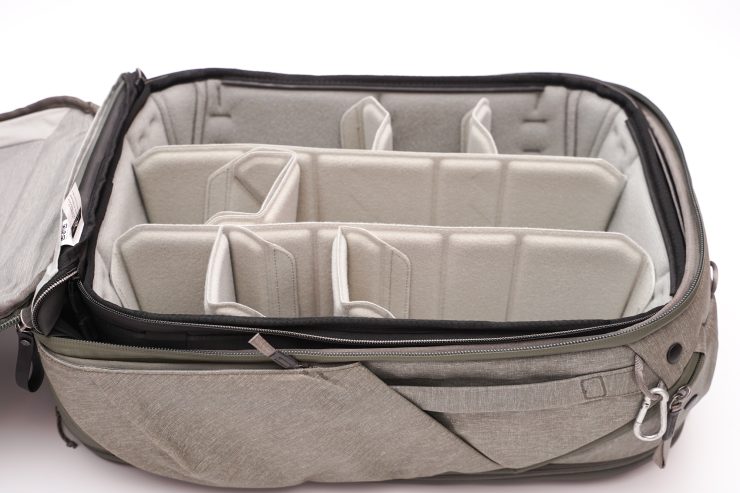
It’s also a good fit for the Travel Backpack 45L or the 35L Duffel.
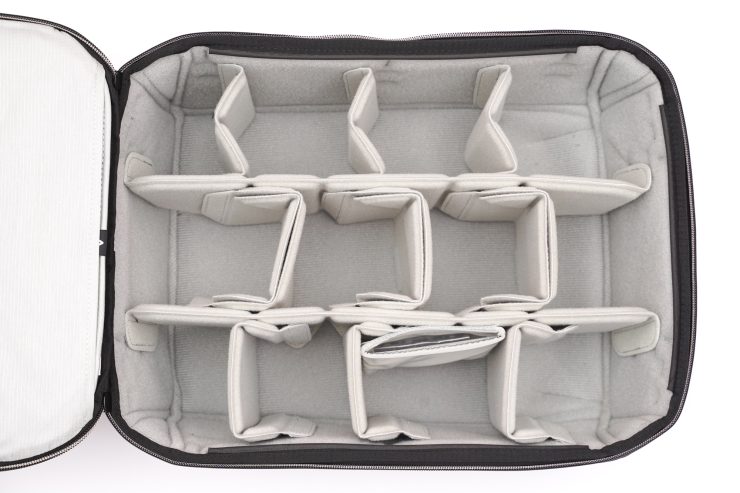
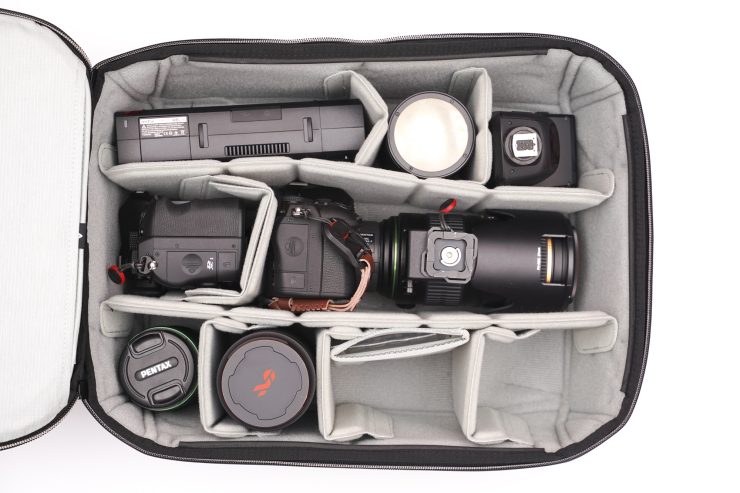
While it’s possible to use a combination of smaller camera cubes to carry a lot of photo gear, larger lenses need a matching camera cube to fit. The XL cube is thus a welcome addition.
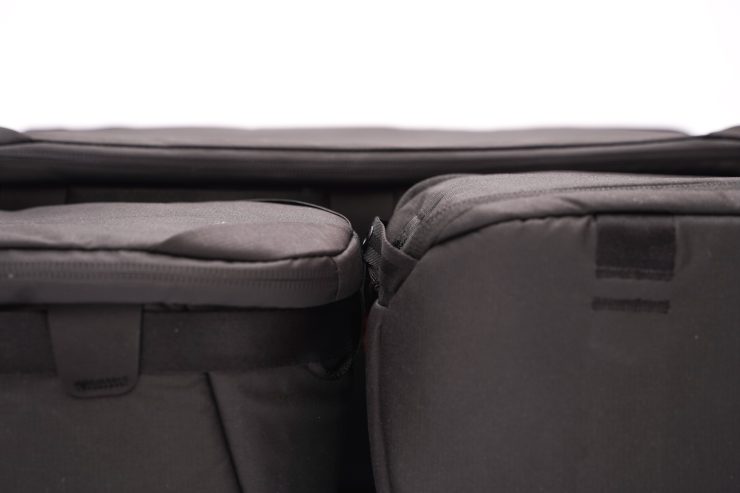
Peak Design did have a “Large” cube before, and the size isn’t all that different: 46 x 34 x 17 cm (18.1″ x 13.4″ x 6.7″ inches) for the XL, compared with 43 x 29 x 13.5cm for the Large. The XL is thus slightly longer, but significantly wider and deeper. It’s a much better match for the Roller Pro, taking advantage of its whole volume. This is great for wide-barreled lenses and when orienting your camera and lens vertically in the cube, but can lead to wasted space with smaller cameras and lenses. Some people might prefer a shallower cube with clothes or other items above or underneath it. The Medium and Large cubes also have side openings, whereas the XL does not. It is irrelevant for the Roller Pro, but will prevent side access with the Travel Backpack.
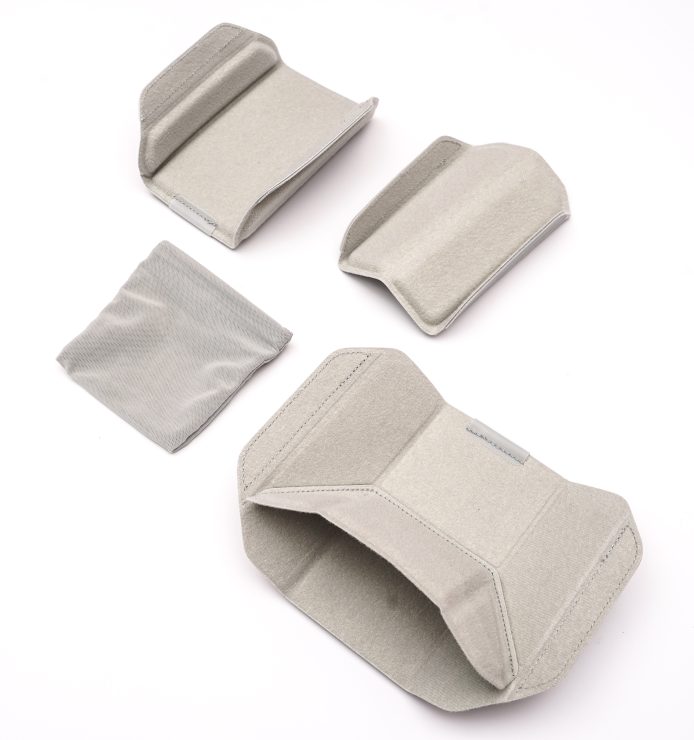
The XL Cube makes it easier to store tall lenses and flashes vertically. It comes with a huge number of dividers: 3 with origami shelves, 3 rigid, 3 bending in the middle, two long dividers and one removable pocket.
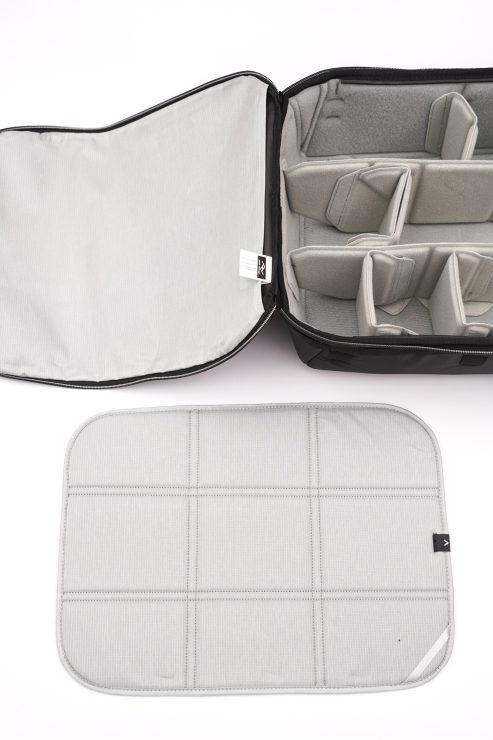
User Report
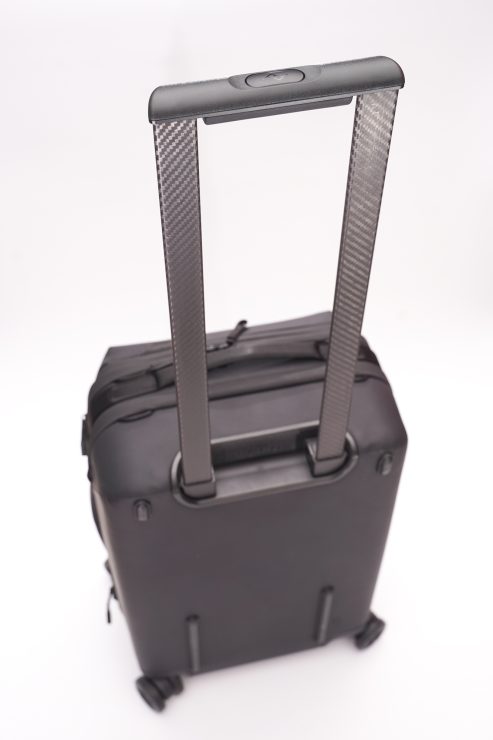
Luggage can seem like one area where innovation has stalled. A shell, four wheels, a telescopic handle and it’s done. Every suitcase, from cheap to luxury, is essentially the same. That Peak Design managed to bring so many new ideas to the table is no small feat.
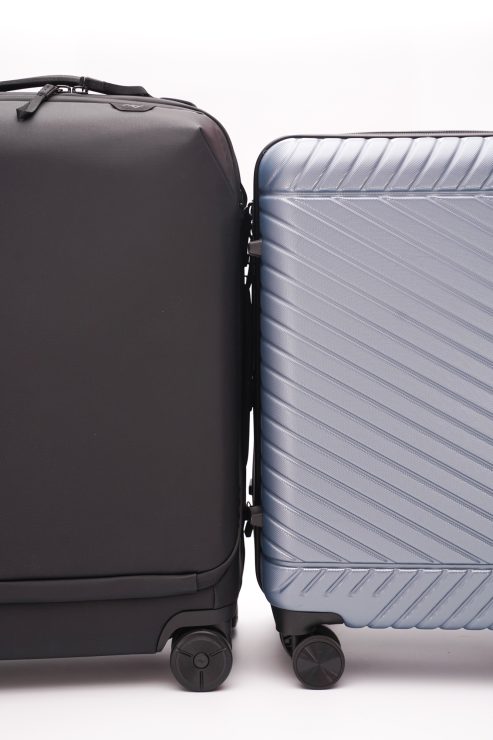
Of course, it isn’t as if travelers were despairing with their current suitcases. And, given the cost of the Roller Pro, for many people it’s going to be overkill.
Still, I have often tried to slide a backpack on the handle of a suitcase, only to take it off because the tubes bent and flexed alarmingly. I have also given away a few suitcases with damaged non-repairable wheels, feeling like I was handling a broken grocery cart. There’s a price for quality products and peace of mind. Peak Design aims to propose a suitcase competing with luxury brands, at a fraction of the price and with a better overall design. With its replaceable wheels, a robust handle and lifetime warranty, we can expect excellent durability.
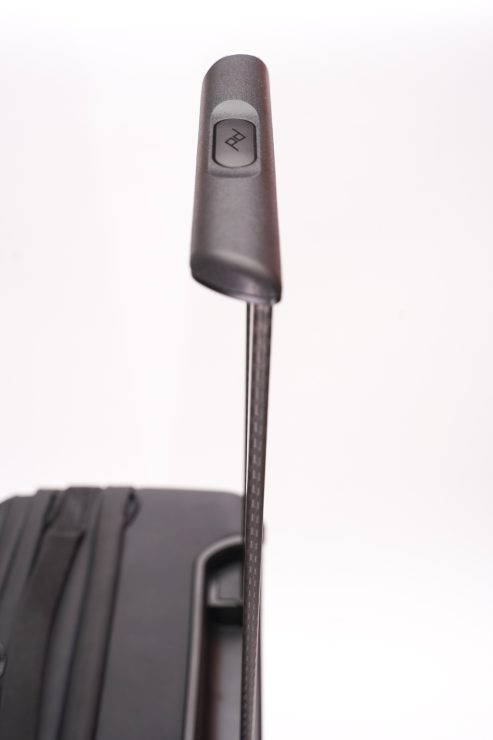
I will report at length after having traveled extensively with the Roller Pro. Right now, I can say that I am impressed with the efforts made to maximize internal volume. I also love how the handle operates. I have tested the wheels on rough surfaces and can attest that they roll better than any other suitcase I have owned.
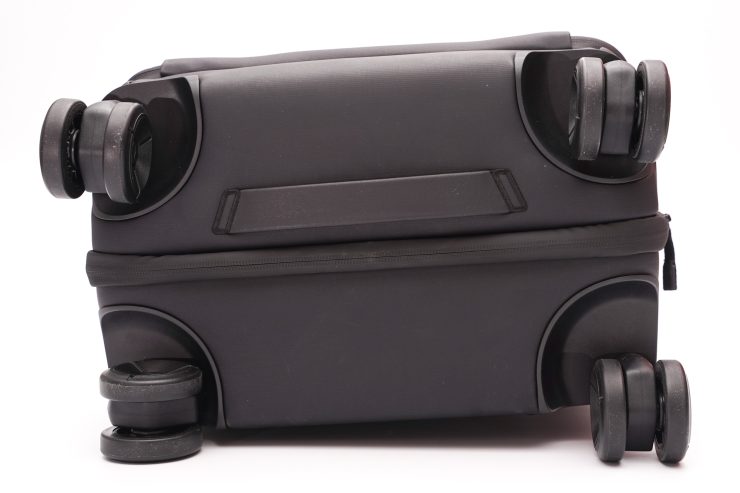
One thing bothers me about the wheels. When laying the suitcase flat, they tend to rotate downwards and get in the way, as seen in the picture above. No big deal, but a small annoyance.
The front pocket’s usefulness should not be minimized. It will make it easier to go through security in airports without opening the whole suitcase.
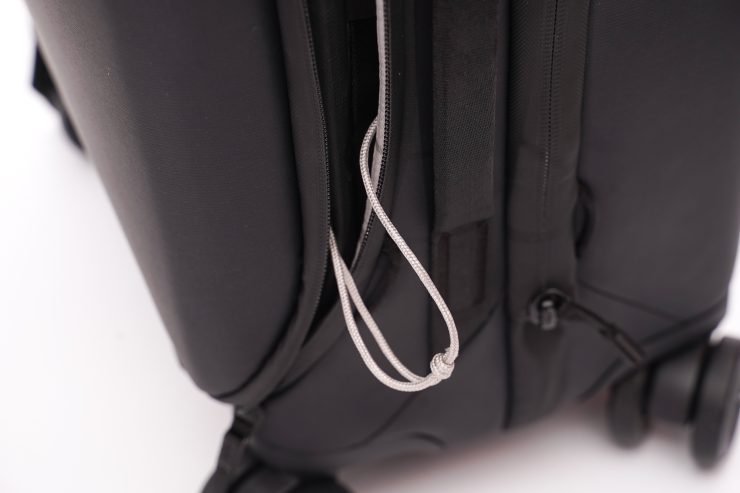
A small annoyance is that the drawbridge cords can get in the way of the zipper when closing the cover.
The Roller Pro really shines as a photographer’s rolling case. The drawbridge is the perfect design to access camera gear in tight spaces and without getting everything dirty. Setting the Roller Pro on a table, desk or caddy is much easier with the smaller ground footprint. The molded shell also offers better protection than other rolling camera bags.
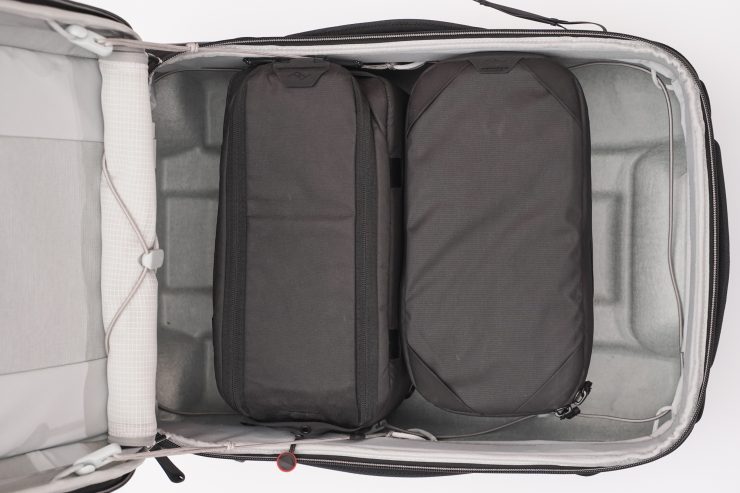
The XL camera cube (or a combination of smaller cubes) works quite well, and the suitcase offers options to strap umbrellas, reflectors, small tripods and whatnot to the sides and top, for an easier time carrying everything.

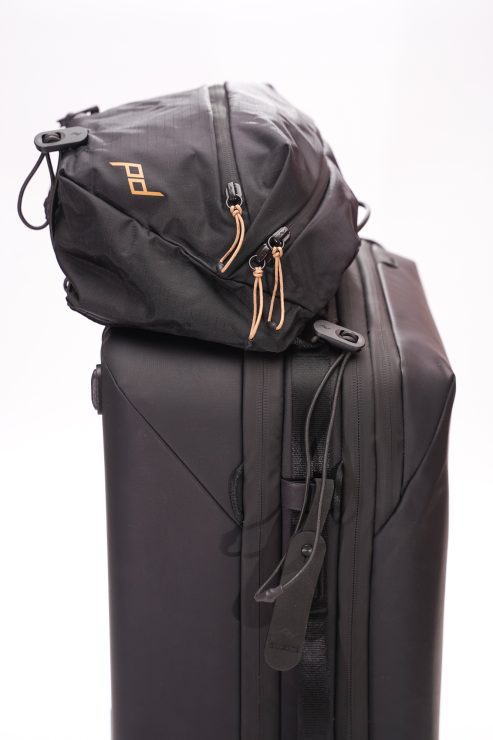
The loops make it simple to attach an Outdoor Sling, Ultralight Packing Cube, or other similar cases/pouches to expand storage.
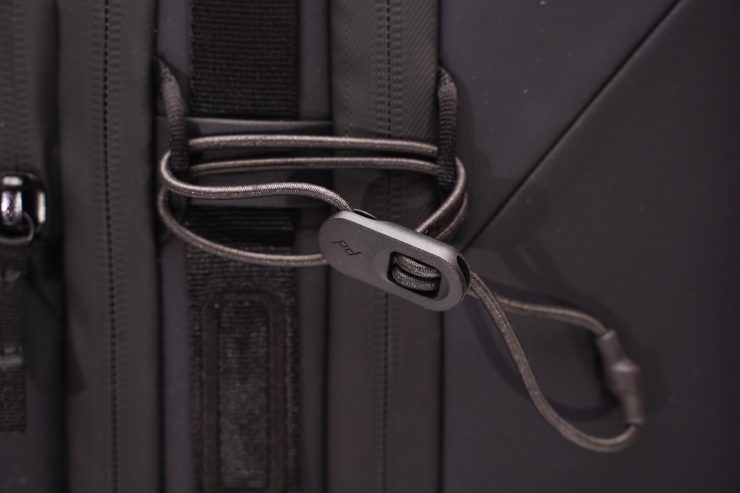
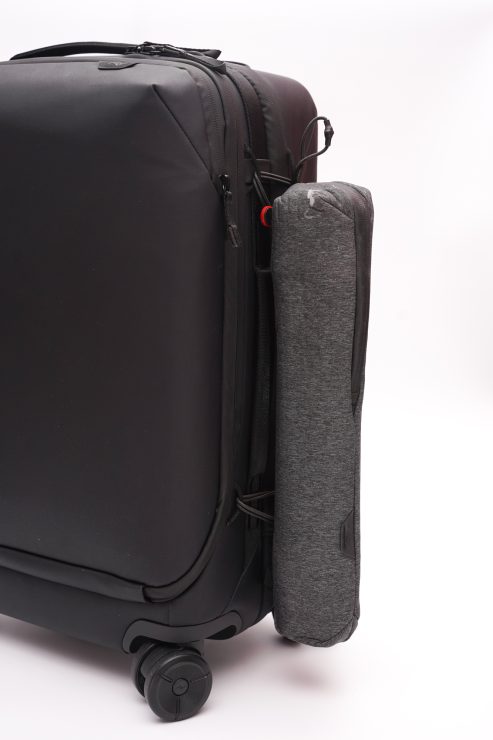
I mentioned the price, and it really adds up when taking into account the cost of camera cubes. Still, the Kickstarter campaign closed at over 13 million USD and nearly 24,000 backers, so there’s visibly a solid market.
Other Options
There is no shortage of inexpensive and serviceable suitcases on the market. The Roller Pro certainly is in the highest tier for cost. It goes head-to-head with suitcases such as Nomatic’s Carryon Classic, which costs a bit more, offers less volume, and doesn’t feature as many innovations.
The Samsonite Proxis Global is among the best suitcase from this well-known company, and with a much more basic design it still costs $500, but a Samsonite Evolution Pro would fit the XL Cube fairly well and costs just over $200 . The Tumi Alpha is robust and durable, but also heavier, not as well-designed for photographers, and costs over $800.
Think Tank is probably the best-known maker of dedicated rolling camera cases. Their Airport Roller Derby is a four wheel option, and the Airport Security V3 is one of the closest two-wheel options to the Roller Pro. Both bags lack modularity to some degree, as dedicated camera bags, and may have slightly smaller internal capacity, but they cost significantly less at $430 and $470, respectively. That’s about $300 less than a Roller Pro plus camera cube, but illustrates that rolling camera cases don’t come cheap.
Manfrotto’s Reloader Spin-55 is another comparable. At around $500, it requires a separate rain cover for protection, but does offer a front pocket and four wheels.
Summary
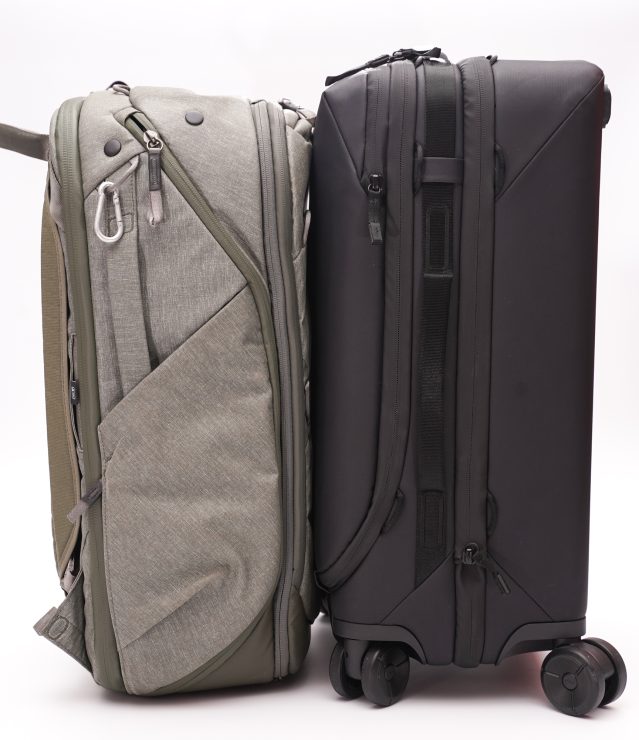
Peak Design’s Roller Pro is a luxury suitcase with sleek aesthetics and several clever innovations which add up to make it unique in the crowded luggage market. It was several years in the making, and it shows. The design is refined, and every choice is deliberate and logical.
The Roller Pro excels for traveling but might be overkill for some, given its price. The front pocket, excellent wheels and ingenious handle will make airport transit easier, and its durability is reassuring.
As a camera case, the Roller Pro is perhaps even better. Its drawbridge opening, convenient storage and deep (optional) camera cube makes it easier to carry and access gear on location.
Again, the price is very steep. The Roller Pro would certainly be easier to recommend if it was cheaper. Peak Design does not target the entry-level market, where there are plenty of inexpensive and decent suitcases. It wants to go head-to-head with the best in the industry, with strong features and a more aggressive price.
Peak Design is a Bluesign company, ensuring ethical manufacturing. It uses recycled materials as much as possible and backs its product with a lifetime warranty that’s easy to claim. For some, this justifies paying a higher price. For others, cheaper options will be sufficient.
Looking only at the product itself, this is, for me, the best rolling case I have ever used. I look forward to taking with me on long trips.
The Roller Pro should be available to the general public in mid to late June of 2025. It’s currently possible to reserve one on the Peak Design Website, and pre-orders are open at B&H Photo.

